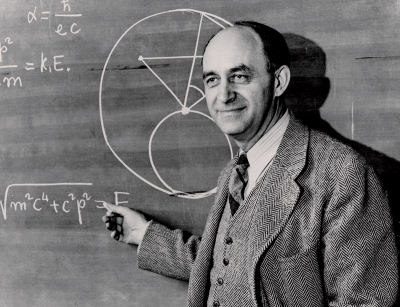
Enrico Fermi was an Italian physicist, a pioneer of the nuclear age and one of the developers of the atomic bomb. He also created the world’s first nuclear reactor, the Chicago Pile-1. He won the Nobel Prize in Physics in 1938 for “his discovery of new radioactive elements produced by neutron irradiation, and for the discovery of nuclear reactions brought about by slow neutrons.”
Enrico Fermi was born in Rome, Italy in 1901. He was scientifically inclined from a very young age. His father’s friend encouraged his interest in science by giving him books on physics and mathematics to read. He also motivated Enrico Fermi to apply to the Scuola Normale Superiore, a top university in Pisa.
In 1918, Fermi made it to the Scuola Normale Superiore and became one of the brightest students. Even professors benefitted from his lectures on general relativity, quantum mechanics, and atomic physics. He gained a Ph.D. in physics in 1922.
From 1927 to 1938, Fermi served as the professor of theoretical physics at the University of Rome, where he carried out experiments on elements. He bombarded a variety of elements with neutrons and in 1934, discovered that slow moving neutrons were particularly effective in producing radioactive atoms. His experiments led to the discovery of nuclear fission and the creation of elements beyond uranium. These contributions won him a Nobel in 1938. In 1935, Fermi discovered the quantum mechanics statistical laws, better known as the Fermi statistics, giving a statistical model of the atom and nucleus.
Fermi became an American citizen in 1944 and accepted a professorship at the Institute for Nuclear Studies at the University of Chicago in 1946. He held this position till his death in 1954. Fermi continued to conduct nuclear fission experiments at Columbia University.
In 1942, Fermi’s team proved that a nuclear reaction could be initiated, controlled, and stopped. He developed the Chicago Pile-1, the first prototype of nuclear reactor at Hanford, Washington, where plutonium, a man-made element heavier than uranium, was produced. Plutonium also could fission and thus was another route to the atomic bomb. During the Second World War, Fermi was a key member of the Manhattan Project, working at the Los Alamos project in New Mexico on developing an atomic bomb. In his later years, Fermi investigated subatomic particles – pi mesons and muons.
Picture Credit : Google




